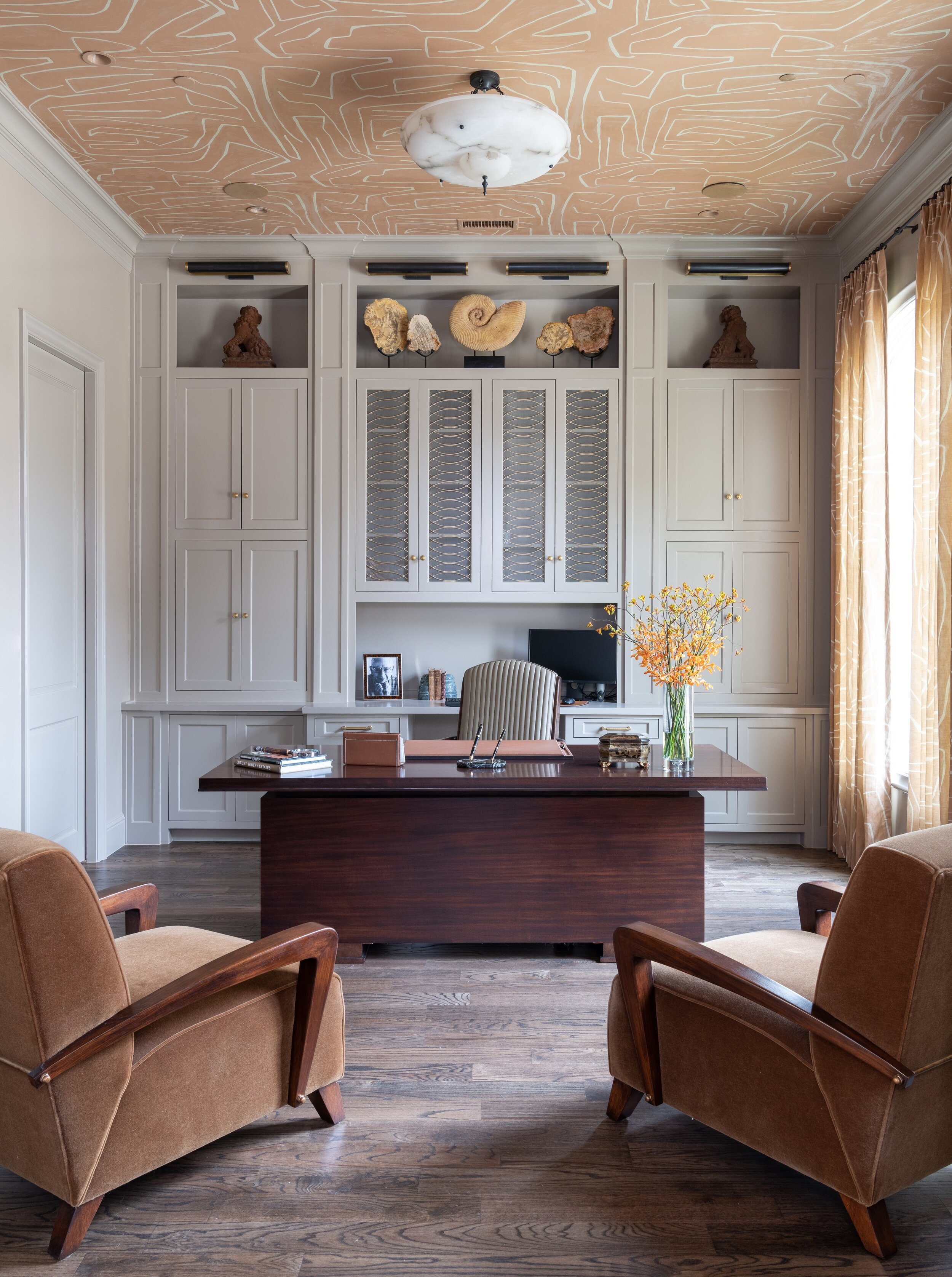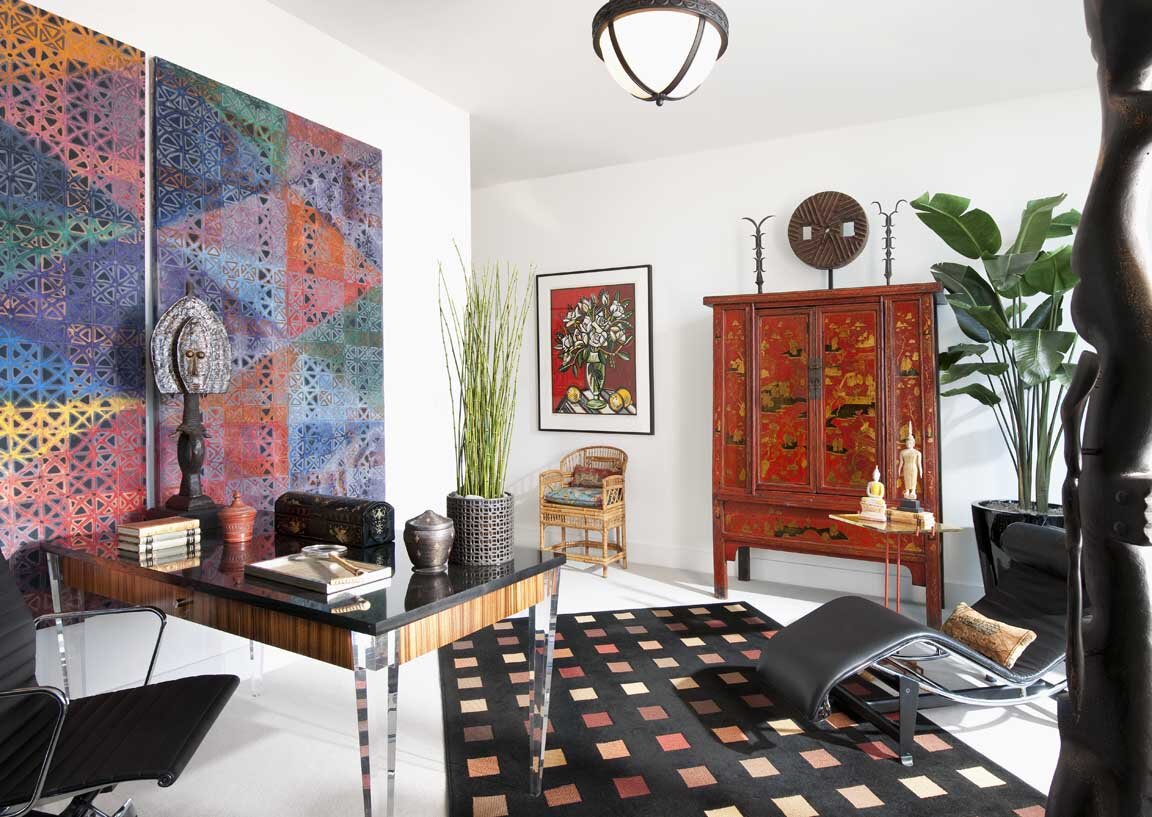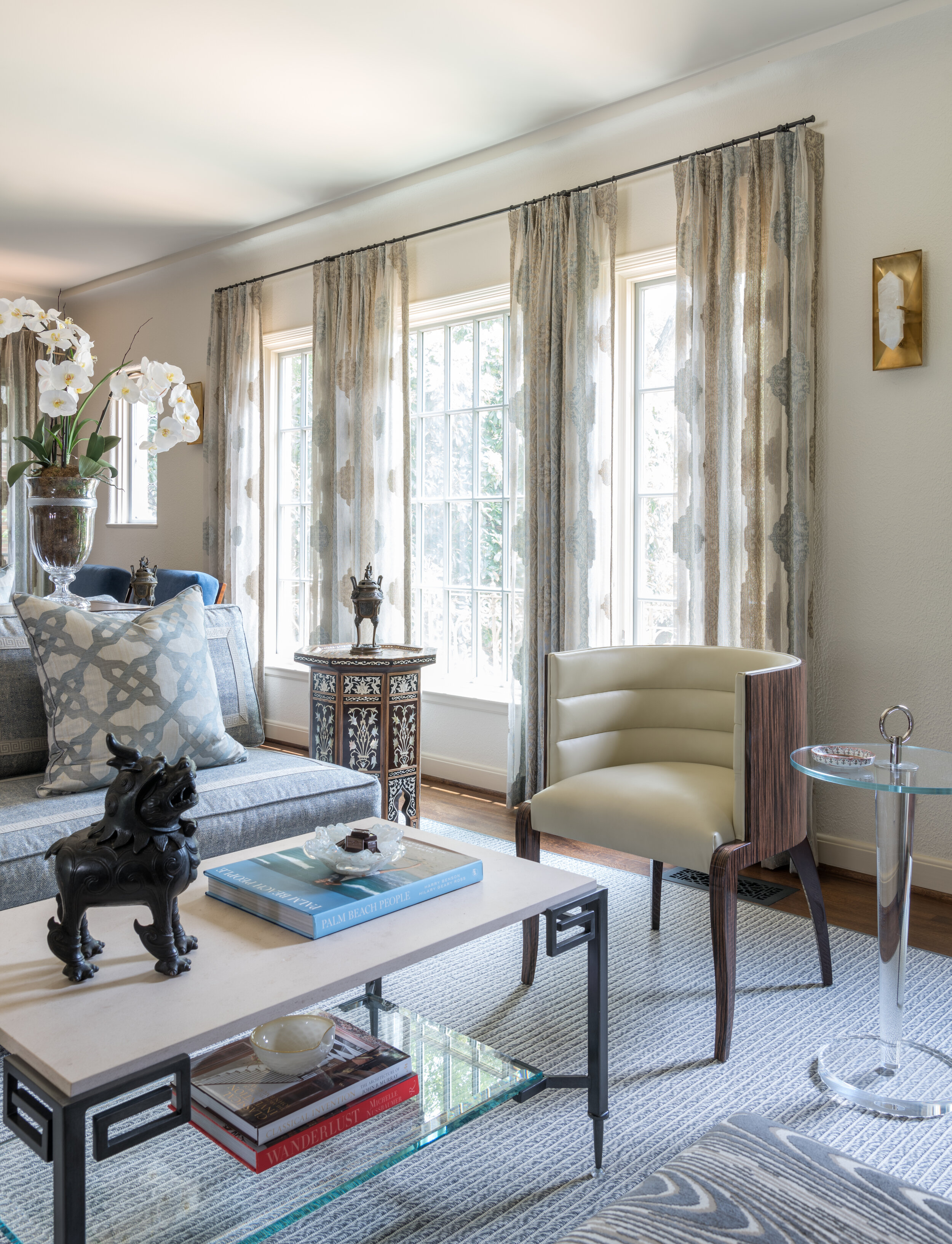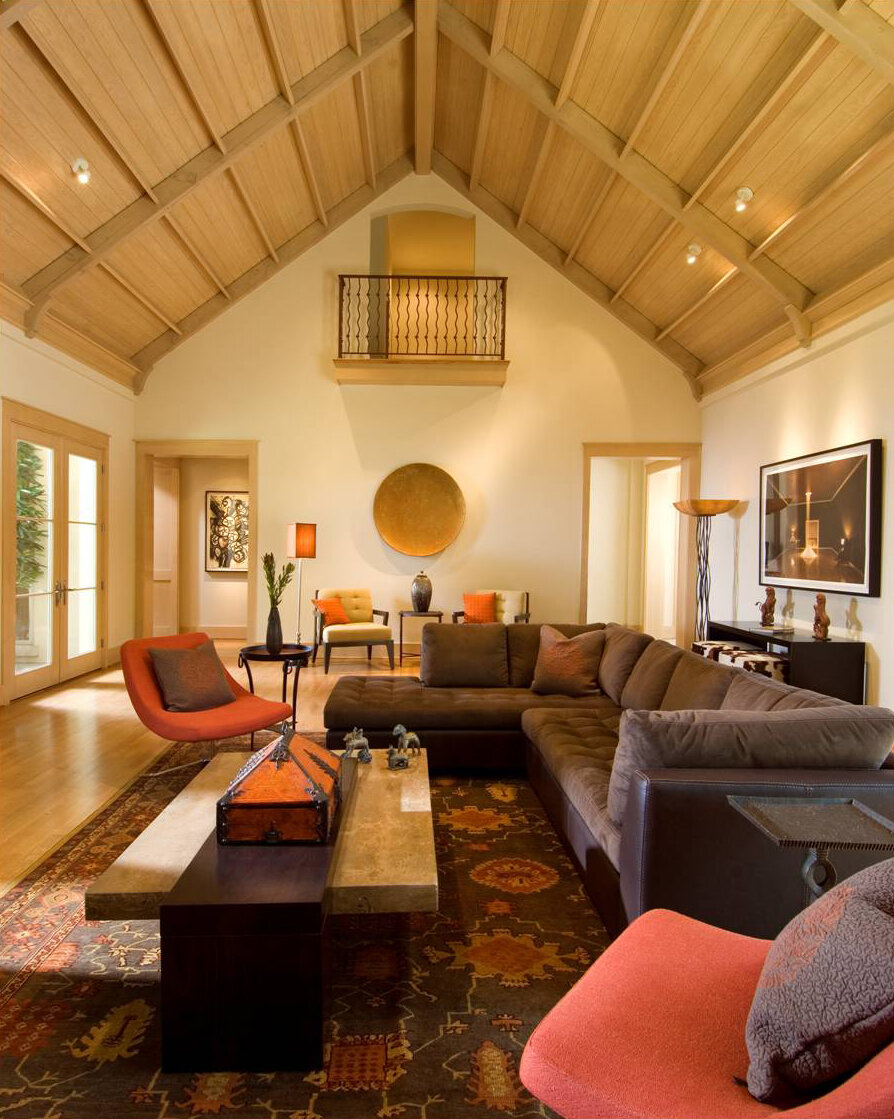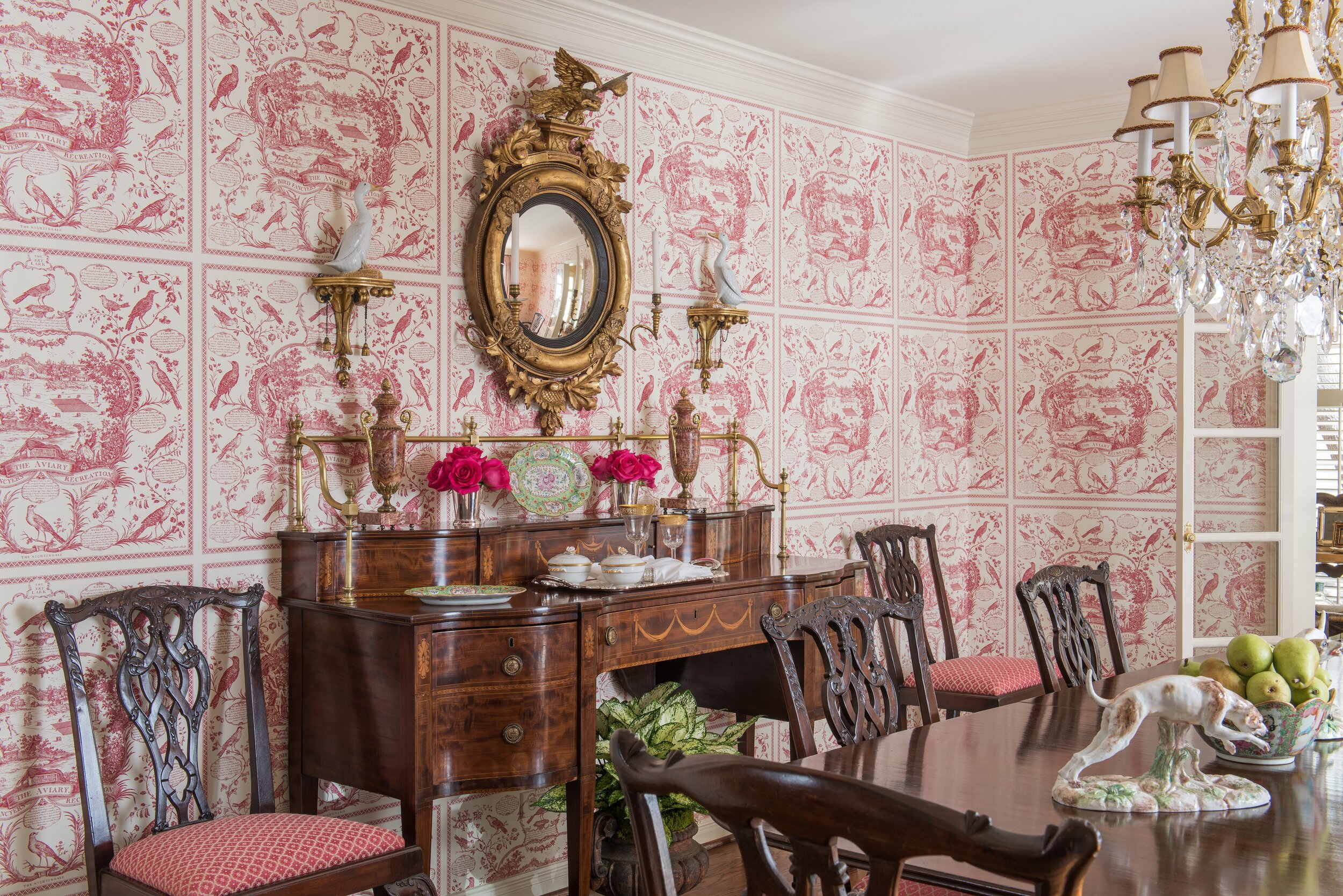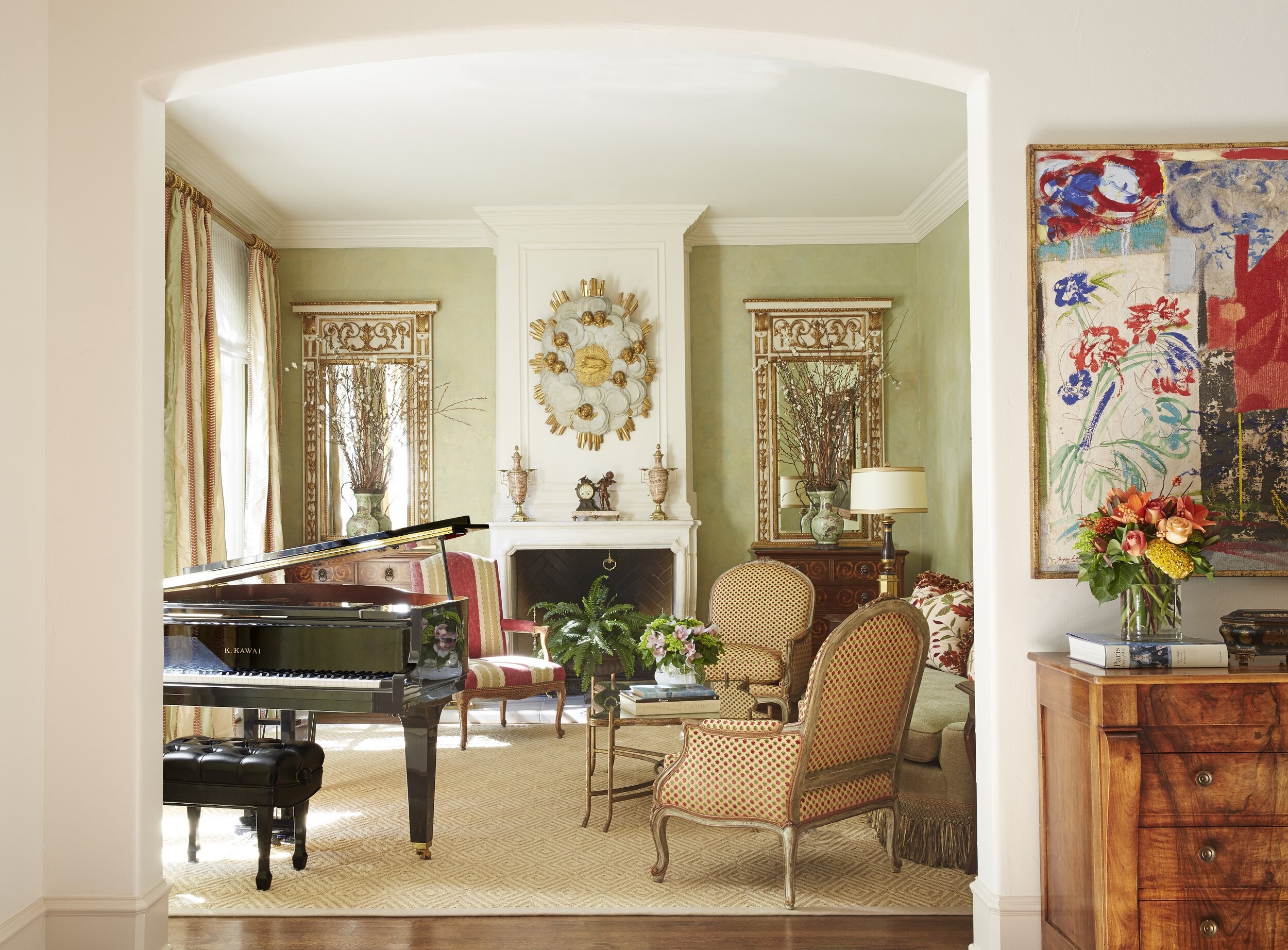The shelving and cabinetry in this home office we designed in north Dallas add lots of helpful storage space.
This year, many of us have found ourselves working from home for the first time, and wanting to design—or redesign—our home office spaces. The best home offices are not just ergonomic and well-organized, but beautiful, too. Read on for some designer tips for home offices, based on things I’ve learned while designing offices for my clients in Dallas.
Pick the Best Room for Your Home Office
The first step to designing a home office is also the most important: choosing the right location. Managing a healthy work-life balance can be a challenge, so it’s crucial to designate a spot that you only use for work. Of course, not everyone has a spare room available. Some other areas for home offices that you might not have considered include the landing, the kitchen, or under the stairs. To create a strong divide between your work and living area within one room, consider using a decorative screen or sliding door to separate the two.
Large windows, such as the ones in this Oak Cliff home office, fill the room with light and promote alertness.
If you put your home office in a corner, choose the corner closest to the window. When you begin to tire of looking at the computer screen, you’ll be glad to have somewhere else to rest your eyes on for a moment. Speaking of eye strain, make sure to install a bright bulb in your lamp for task lighting.
Plan Your Color Scheme
Paint color psychology plays an important role in home office design. Blues, greens, and purples are cool colors that promote relaxation. Since blue is the sleepiest of them all, I don’t recommend it for offices. On the other hand, green is a nice medium between restful and alert, giving the room a refreshing feeling.
Pastel yellow, pink, burnt orange, or dark red can be gently energizing, but bright orange, neon yellow, or fire engine red paint colors will be too overwhelming for most offices. Neutrals such as whites, beiges and tans are popular choices for both commercial and home offices. That said, since this is your personal space and not a cubicle, feel free to include bold accent colors in your décor for more personality.
We used a lot of colorful artwork in this Dallas high-rise home office. The white walls give the eye places to rest.
Shop for Space-Saving Organizational Aids
You’ll definitely want some organizational aids and storage, but don’t buy anything you won’t use. Identify everything you need to perform your job well at home before you shop for office supplies. For example, if you only use one pen, there’s no need to get a pen cup. To save on desk space, consider installing floating shelves on the wall or using a vertical file folder.
A universal design problem for home offices is managing cords. Thankfully, there are products on the market for this exact issue, including desk grommets, cable clips, and cord covers. Power strips can be mounted to the underside or backside of your desk to keep them out of sight.
If you’re going to splurge on only one piece of furniture, it should be your office chair. Ergonomic desk chairs will have a curved back that is firm, rather than cushy, for the best support.
This home we designed had modern architecture, so we made sure that the home office was modern in style, too.
Coordinate Your Office’s Décor With the Rest of Your Home
Generally, a home office should be in stylistic harmony with the rest of the house. For example, an antique writing desk is a great choice for an office in a traditional house, while the furniture in a midcentury modern office should be simple and streamlined. If you’re a plant lover, bring cheer to your space with some potted plants. Art lovers should adorn the wall behind their desks with a gallery of artwork or a stunning patterned wallpaper.
Depending on your line of work, you may need to invite clients into your home office. Include some comfortable seating for guests if you do. Otherwise, you should avoid putting a cozy sofa or reading chair in your office. The temptation to take a nap may become too difficult to resist!
These additional chairs we added offer visitors a comfortable place to sit when they stop by.
When you love your home office, you’ll be more motivated to spend time in it, and keep the area tidy, too. Hopefully, with these suggestions in mind, you can tackle your home office design project with confidence.
The photos in this article are just a few examples from the Chambers Interiors design portfolio. As you can see, our design team has a lot of experience with home offices. If you’re interested in hiring us to design an office that goes perfectly with your Dallas home’s architecture, email us at info@chambersinteriors.com or give us a call at 214-651-7665.

